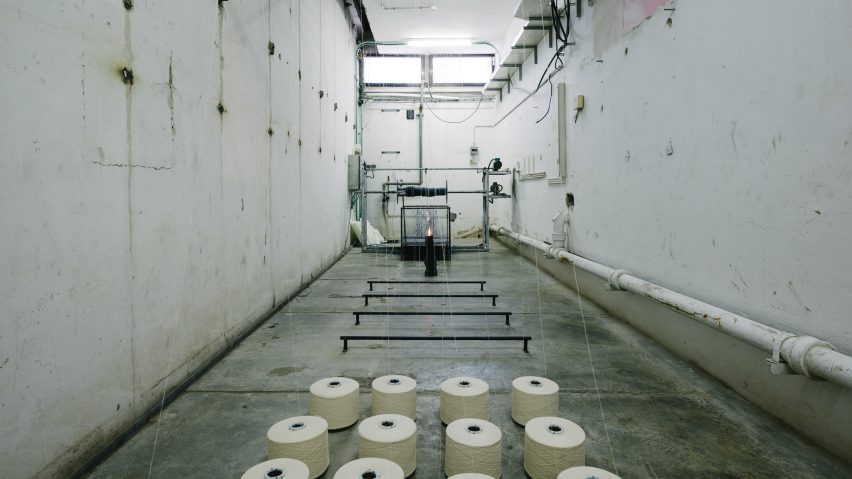
Installation spins giant candles from yarn the length of Trump's border wall
A candle with a wick made from yarn the same length as US president Donald Trump's proposed US-Mexico border wall was unveiled at Jerusalem Design Week earlier this month.
The giant candle was one of several designs created on a custom-made candle-making contraption that was installed in a room at Jerusalem's former Bezeq Telephone exchange building.
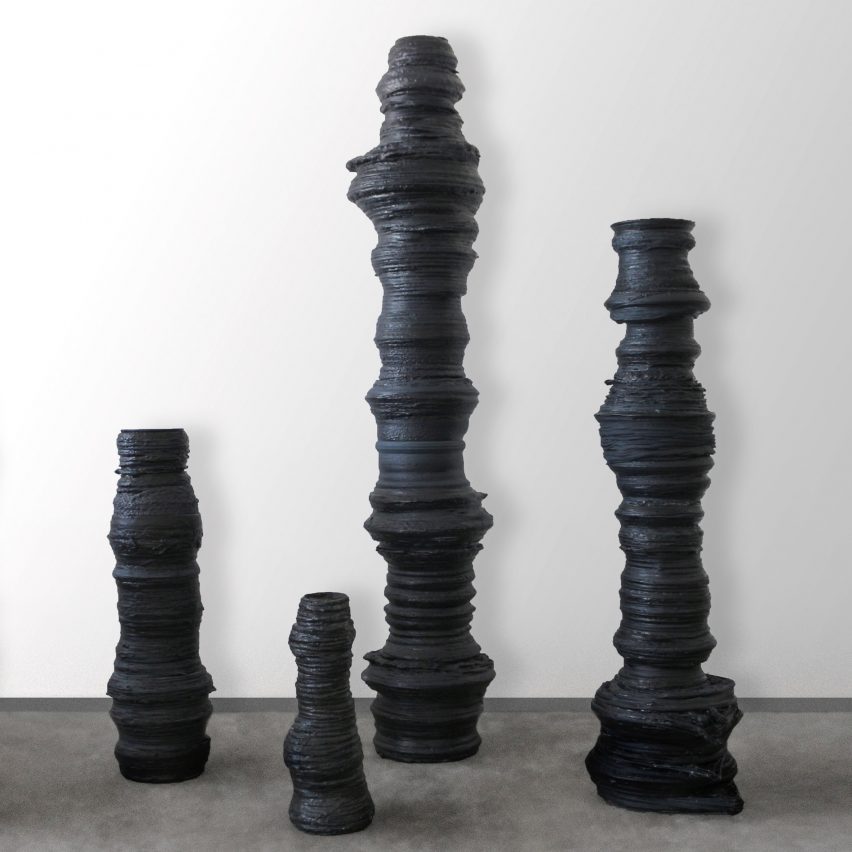
Called Borderline, the project was conceived and created by UK-based designer Marlene Huissoud and Israeli designer Erez Nevi Pana in collaboration with Arta Yarn Manufacturers – a factory in Tel Aviv that produces small wicks for candles.
The project saw yarns the same length as various contentious borders around the world, dipped in black wax and coiled up to create large sculptural candles before being symbolically burnt away.
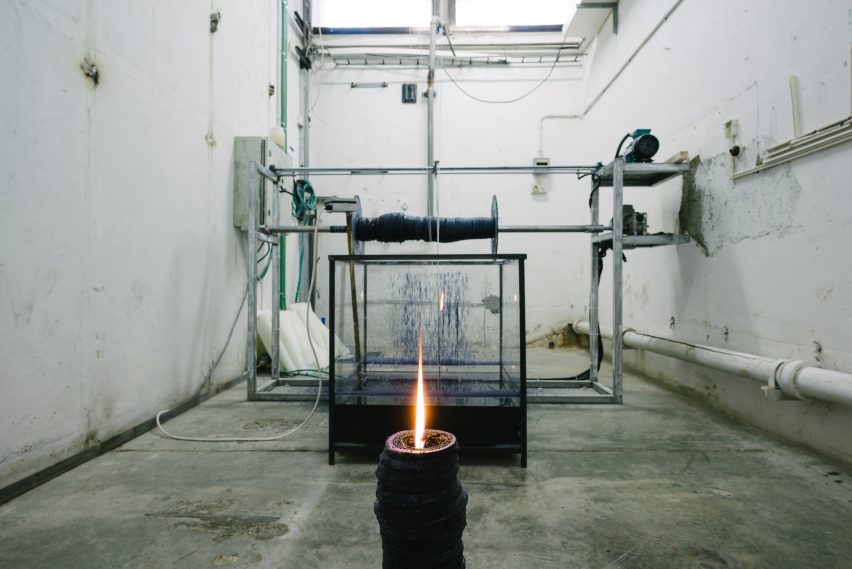
As well as President Trump's proposed 3,218-kilometre border wall, candles were made to represent the 780-kilometre West Bank Barrier, the 2,700-kilometre Moroccan Wall of Western Sahara, the 60-kilometre wall around Baia Mare in Romania and the 135-kilometre Hadrian's Wall in the north of England.
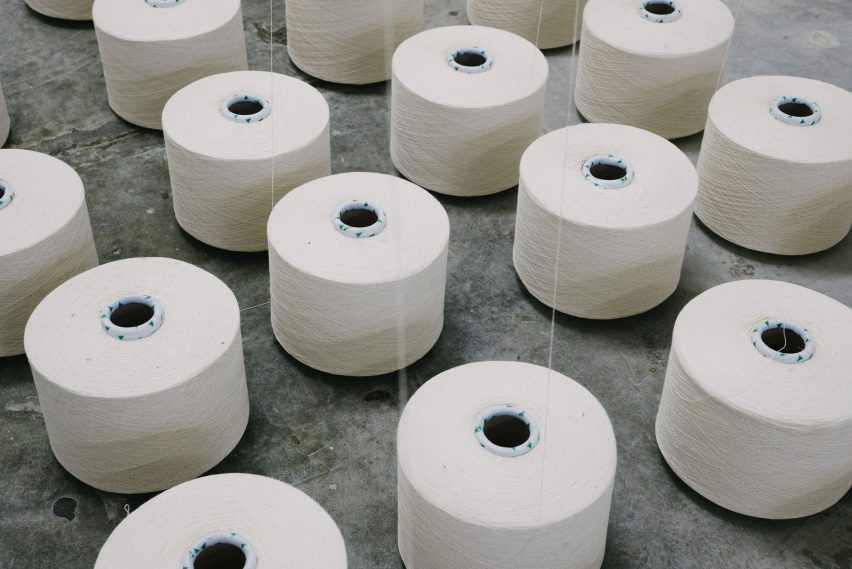
"Borderline stems out of a general feeling of insecurity, an instability that seems to have taken over the whole world," said Marlene Huissoud. "We wanted to translate this fragility by the installation poetically and politically."
"Borderline explores the ways in which design can imagine unity within diversity, facing the global upsurge of nationalism, xenophobic attacks and record numbers of refugees," explained the designers.
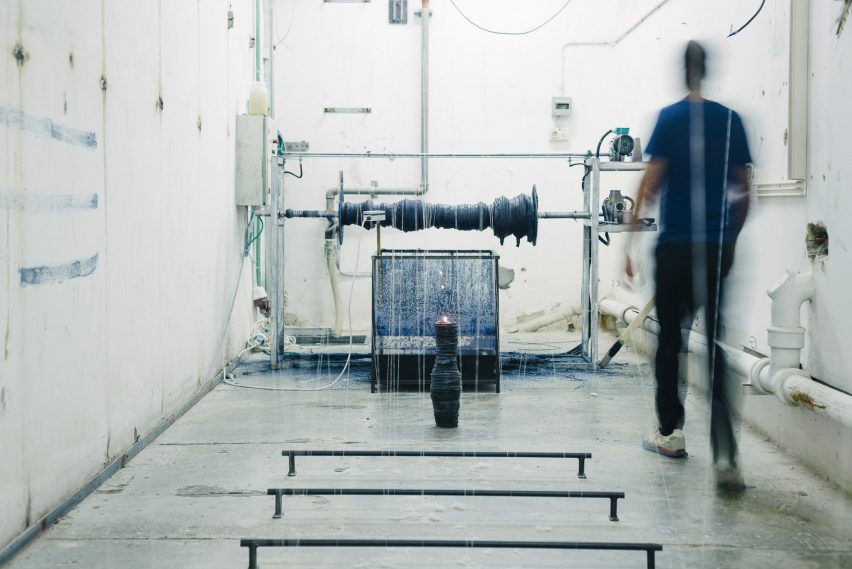
Installed in a long and narrow room, 24 rolls of white yarns were stretched by two engines. The yarns were pulled up and down between eight bars – four of which were fixed to the floor, and four to the ceiling.
The stretched yarns formed "a conceptual wall that is constantly moving forward," explained the designers.
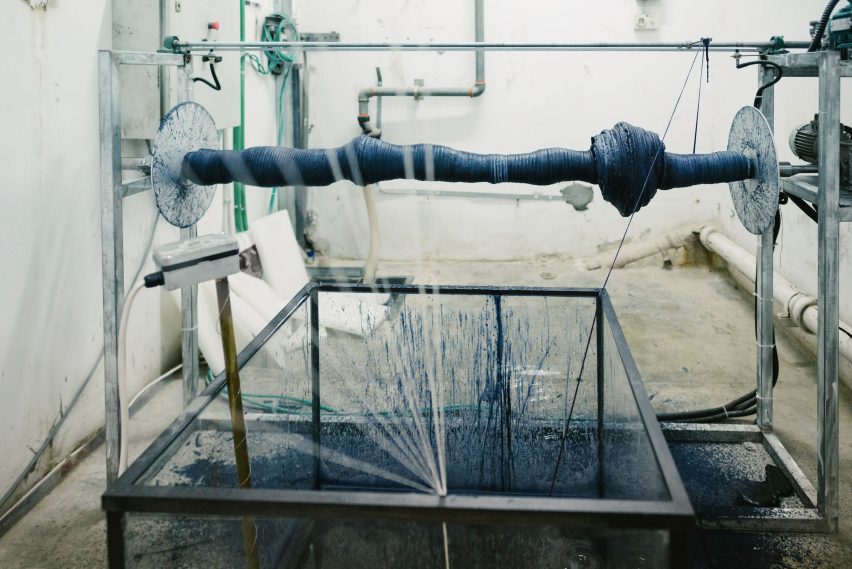
The yarns are pulled together to create one thick yarn, which is then dipped into an aquarium full of black wax and pulled out as a wick. The engines pull the wick around a rotating metal rod to form a coiled mass which becomes the candle.
A joystick that controls the speed and movement of the engines allows the designers to create different shaped candles.
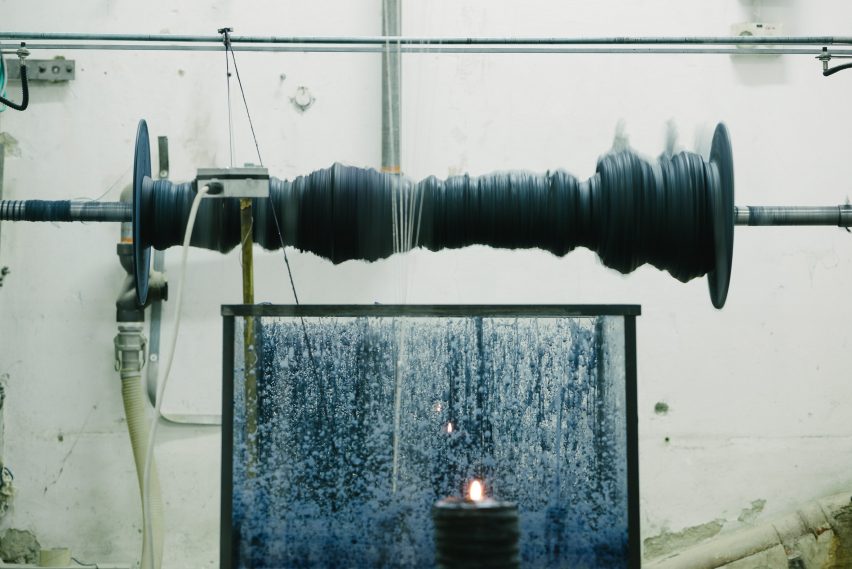
"The yarn is a way to manifest a line, something that unites and separates at the same time," said Huissoud. "The candle represents something physical but also ephemeral."
Erez Nevi Pana added: "Each candle produced makes one think about Jerusalem and the variety of populations, religions, streams, groups, individuals that maintain the existence and essence of this city."
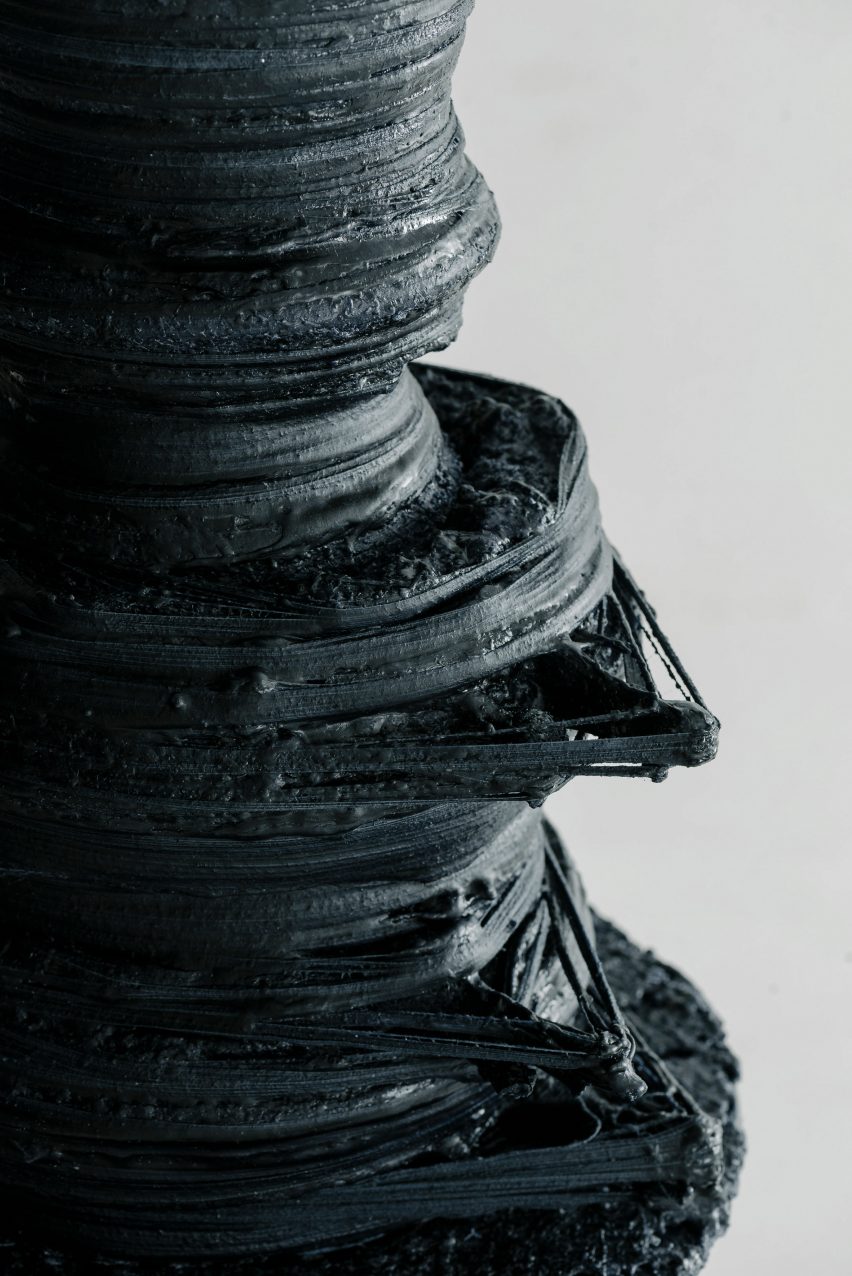
"If the concept of unity within diversity could succeed in Jerusalem, it could succeed everywhere and we will see real walls falling."
Dovetailing with the design week's broader theme of Islands, the Borderline project was part of a wider International Teams program that paired international and local design talent with local manufacturers.
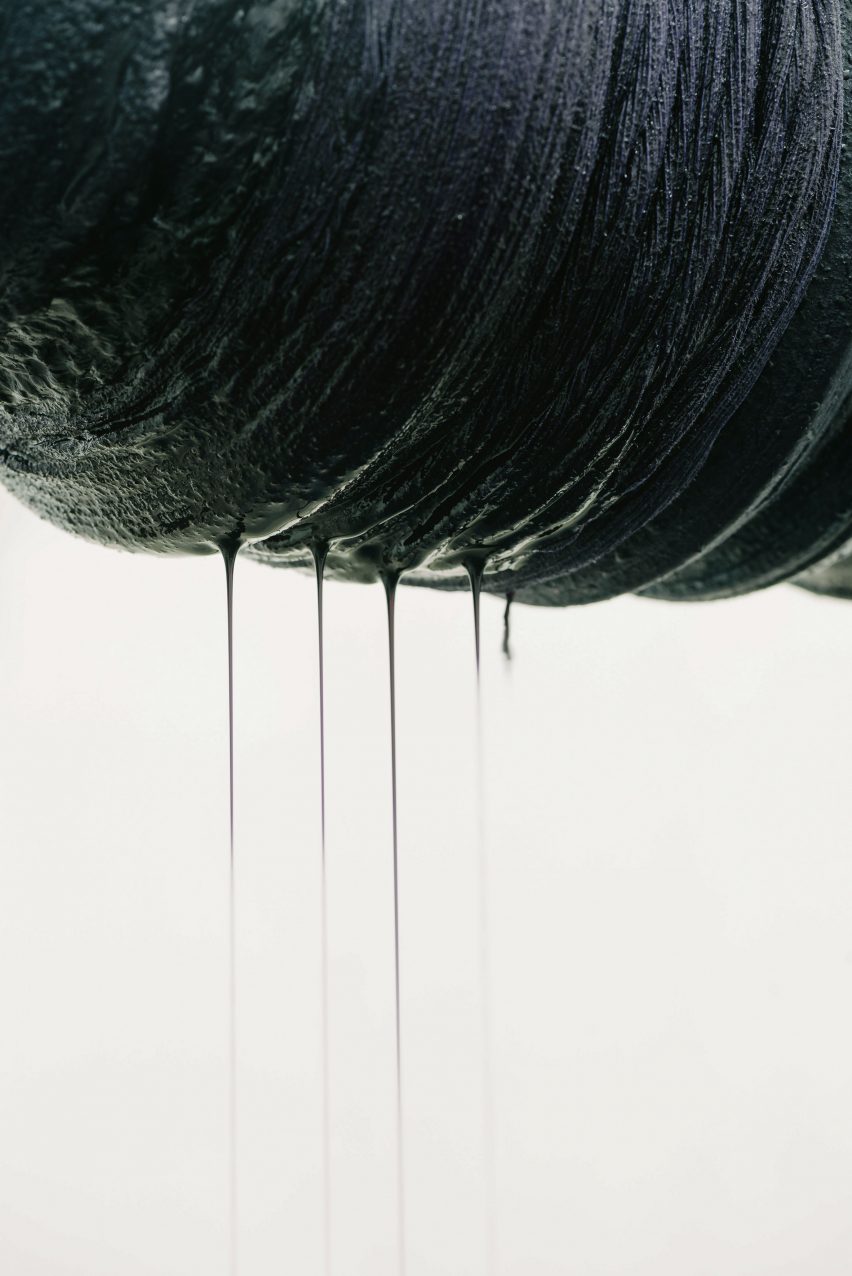
The sixth edition of Jerusalem Design Week took place between 8 June to 15 June across four venues in the city's Talbiya neighbourhood.
Other projects inspired by President Trump's proposed border wall include a terminal and bridge design by Mexican firm Legorreta that would make the US-Mexico crossing quicker, while Malaysian design office No-to-scale proposed a 1,954-mile-long dining table that would run along the border.
Photography is by Dor Kedmi, unless stated otherwise.